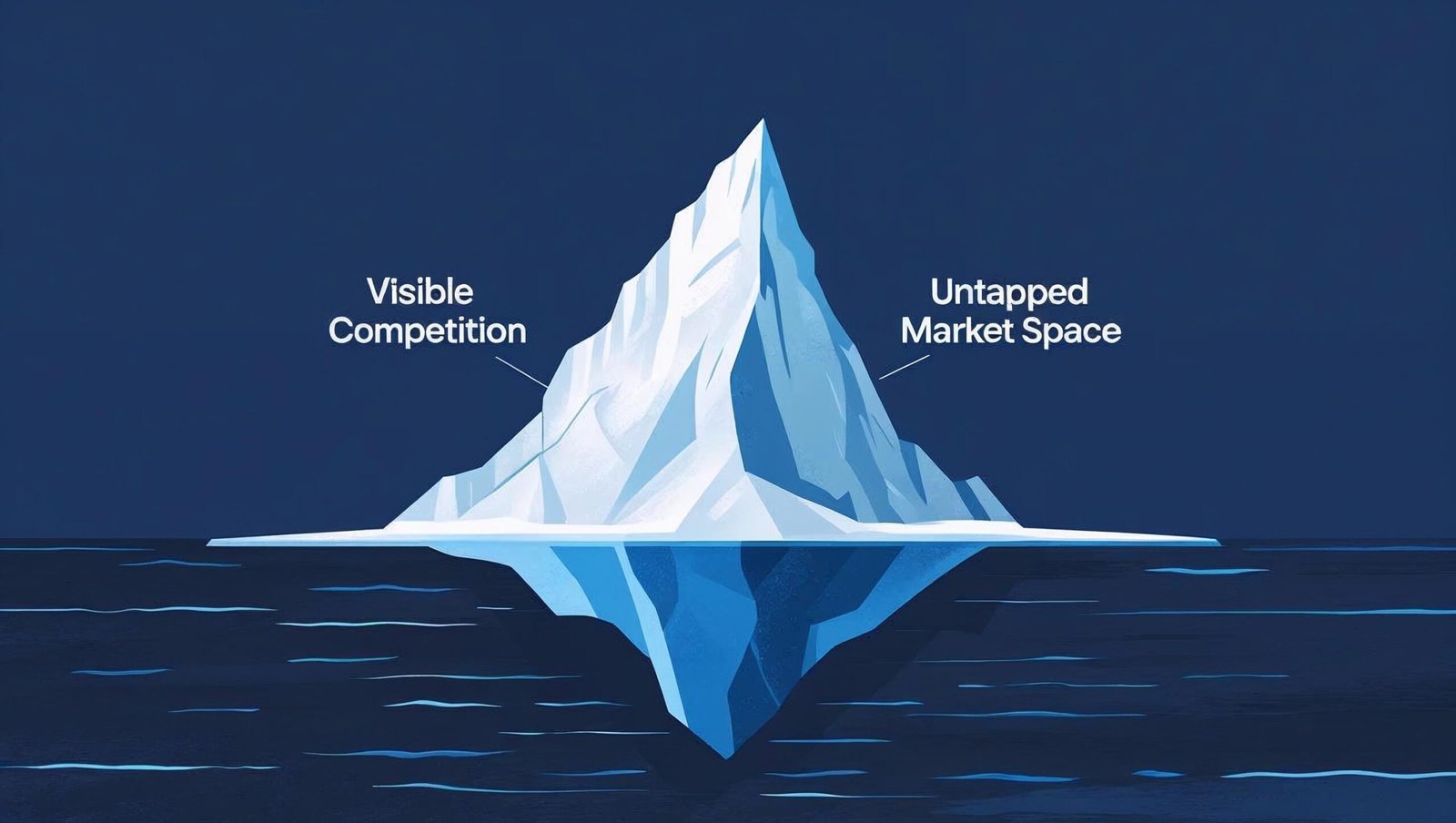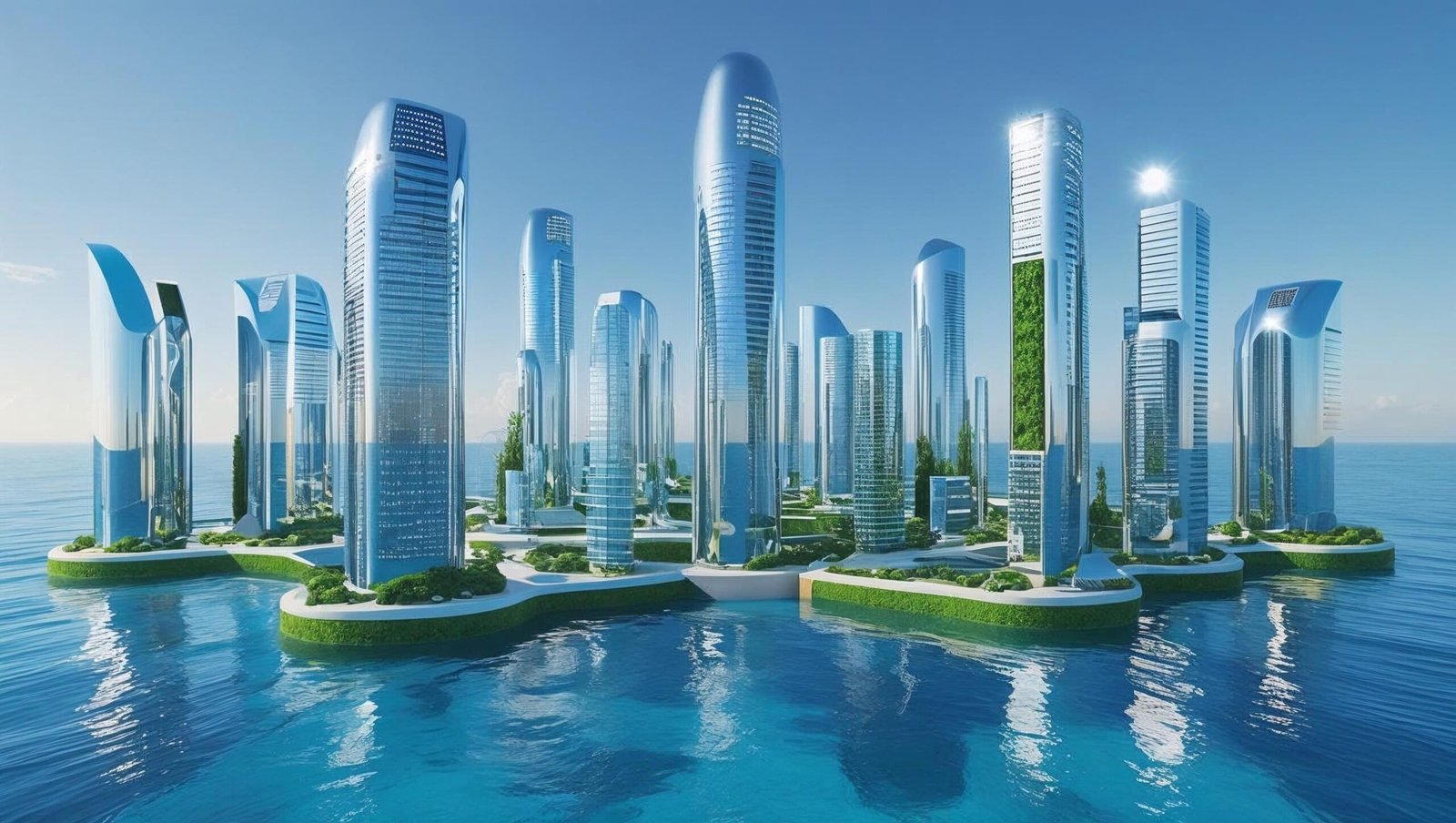10 Transformational Business Insights from Blue Ocean Strategy That Will Redefine Your Market in 2025
Introduction
In today’s hypercompetitive world, most businesses struggle to survive within crowded markets, constantly battling rivals in a never-ending red ocean of competition. But what if there were a radically different approach? W. Chan Kim and Renée Mauborgne propose such an alternative in their groundbreaking book Blue Ocean Strategy. First published in 2005 and updated in 2015, the book challenges traditional business thinking and provides a comprehensive framework for value innovation.
This detailed blog post delves into the key insights from Blue Ocean Strategy, unpacks its core principles, and explores how organizations can strategically sidestep fierce competition by creating “blue oceans” of untapped market space.

Chapter-Wise Summary and Analysis
Chapter 1: Creating Blue Oceans
The book begins with a compelling thesis: instead of fighting competitors in a saturated market (red ocean), companies should pursue new, unexplored markets (blue oceans). This strategy allows for value innovation—simultaneous pursuit of differentiation and low cost.
Lesson: Avoid competing head-on. Create new demand.
Chapter 2: Analytical Tools and Frameworks
This chapter introduces strategic tools like the Strategy Canvas and the Four Actions Framework (Eliminate, Reduce, Raise, Create). These are essential for mapping current industry conditions and identifying opportunities for value innovation.
Lesson: Use analytical tools to chart unexplored waters.
Chapter 3: Reconstruct Market Boundaries
Kim and Mauborgne outline six paths to reconstruct market boundaries:
- Look across alternative industries
- Look across strategic groups
- Look across buyer groups
- Look across complementary products
- Look across the functional-emotional orientation
- Look across time
Lesson: Break industry boundaries to unlock new value.
Chapter 4: Focus on the Big Picture, Not the Numbers
Many businesses become bogged down by operational minutiae. The authors advocate for visualizing strategy and focusing on macro-level strategic decisions.
Lesson: See the forest, not just the trees.
Chapter 5: Reach Beyond Existing Demand
Instead of catering only to current customers, the book recommends targeting non-customers. These include:
- Soon-to-be non-customers
- Refusing non-customers
- Unexplored non-customers
Lesson: Expand your market by addressing latent needs.

Chapter 6: Get the Strategic Sequence Right
This chapter outlines a logical sequence for creating a blue ocean:
- Buyer utility
- Price
- Cost
- Adoption
Lesson: Validate strategy through a sequential filter.
Chapter 7: Overcome Key Organizational Hurdles
Innovation is often stifled by internal resistance. The authors identify four organizational hurdles:
- Cognitive
- Resource
- Motivational
- Political
Lesson: Align people and resources through tipping-point leadership.
Chapter 8: Build Execution into Strategy
To succeed, strategy and execution must go hand in hand. Fair process—engagement, explanation, and clarity of expectation—builds trust and drives effective execution.
Lesson: Execution is not separate from strategy.
Chapter 9: Blue Ocean Strategy in Practice
Case studies such as Cirque du Soleil, Southwest Airlines, and [yellow tail] wine illustrate successful applications of the blue ocean strategy framework.
Lesson: Real-world success is possible across industries.
Chapter 10: Sustainability and Renewal
Creating a blue ocean is not a one-time achievement. Sustainability requires continuous innovation, value improvement, and proactive strategy renewal.
Lesson: Reinvent or risk being overtaken.

The Core Ideas in Depth
What Is a Blue Ocean?
Blue oceans are untapped market spaces, ripe with opportunity and free from direct competition. They contrast with red oceans, where companies fight for a shrinking profit pool.
Value Innovation
This concept is central to the book. It involves creating greater value for customers while simultaneously reducing costs. Value innovation occurs when companies align innovation with utility, price, and cost positions.
Strategy Canvas
A visual representation of a company’s relative performance across industry factors. It allows businesses to identify where they can differentiate and where they can cut costs.
Four Actions Framework
- Eliminate factors taken for granted
- Reduce aspects below industry standards
- Raise standards in critical areas
- Create entirely new elements that the industry has never offered
Tipping Point Leadership
Instead of trying to change everyone, the strategy focuses on leveraging a few key influencers who can tip the balance.
Fair Process
Engaging people in strategy formation fosters commitment and trust. The three E principles (Engagement, Explanation, Expectation Clarity) ensure smoother implementation.

Practical Applications
For Startups
- Focus on innovation, not imitation
- Target underserved markets
- Optimize limited resources
For Established Firms
- Re-evaluate legacy strategies
- Realign offerings with customer needs
- Explore adjacent markets
For Personal Branding
- Differentiate your personal skill set
- Offer unique value
- Avoid saturated niches
For Public Sector and Nonprofits
- Innovate services that increase outreach
- Deliver better public value
- Optimize operational models
For Educational Institutions
- Create new programs to meet future skill demands
- Align learning experiences with evolving market realities
- Innovate within curriculum to attract wider learner demographics
For E-Commerce and DTC Brands
- Offer bundles or unique value propositions
- Explore underserved customer needs
- Utilize direct feedback loops for innovation
For Healthcare and Wellness Startups
- Combine technology with personalized care
- Address gaps in mental health or preventive care
- Build trust through transparency and access
For Tech Innovators
- Integrate usability with cutting-edge features
- Prioritize experience over specs
- Design ecosystems, not just products
Case Studies
Nintendo Wii
Nintendo didn’t try to outdo PlayStation or Xbox in the traditional gaming market. Instead, it created a blue ocean with Wii—targeting non-gamers, families, and the elderly through motion-controlled gameplay. By simplifying technology and focusing on accessibility, Nintendo reduced development costs while attracting an entirely new customer base.
Key Blue Ocean Strategy Insight: Look across non-customers and redefine what value means.
Cirque du Soleil
Rather than compete with traditional circuses, Cirque du Soleil eliminated animal acts and emphasized theatrical storytelling and artistic performances. This allowed them to attract adult theatergoers and corporate clients, transforming a declining industry.
Key Blue Ocean Strategy Insight: Blend elements of distinct industries to create new categories.
iTunes
Apple’s iTunes didn’t just sell music—it solved the piracy problem by providing a legal, user-friendly digital music platform. It redefined the way people consumed music and captured a blue ocean of tech-savvy, convenience-seeking consumers.
Key Blue Ocean Strategy Insight: Solve a major industry pain point and create a new consumption model.
Airbnb
By enabling individuals to rent out personal spaces, Airbnb created a platform business model that bypassed traditional hotels. It connected hosts with travelers in an entirely new way, expanding the market for temporary lodging.
Key Blue Ocean Strategy Insight: Use technology to democratize value creation.
Tesla
Tesla didn’t just build electric cars—it redefined transportation by aligning innovation with sustainability, software, and high-performance design. The company continues to operate in a blue ocean where brand appeal, technology, and environmental consciousness intersect.
Key Blue Ocean Strategy Insight: Position innovation at the intersection of social relevance and luxury.

Blue Ocean Strategy in the Digital Era
With the digital transformation sweeping across industries, the principles of Blue Ocean Strategy are more relevant than ever. Businesses are finding blue oceans in:
- Subscription Models: Netflix and Spotify disrupted traditional media distribution by offering user-centric, on-demand experiences.
- Platform Economies: Companies like Uber and Amazon created ecosystems that revolutionized logistics, transport, and commerce.
- Remote Work Solutions: Tools like Zoom and Slack expanded access to remote collaboration, opening up new markets for digital productivity.
- AI and Automation: Leveraging artificial intelligence to automate customer support, personalize marketing, and streamline operations allows firms to create new value dimensions.
- EdTech Innovation: Platforms like Coursera and Duolingo are reimagining how people learn by combining accessibility with gamified experiences.
- FinTech Disruption: Neobanks and payment apps are bypassing traditional banking inefficiencies.
Digital Blue Ocean Tip: Map user friction points in the current red ocean and develop digitally-enabled solutions that simplify or remove them.
Thought Leadership and Blue Oceans
Thought leaders can also apply Blue Ocean Strategy to build authority:
- Create original frameworks or methodologies
- Launch niche newsletters or podcasts
- Develop unique value-based communities
- Offer freemium content that transitions into premium learning
- Organize micro-events or digital meetups around underserved themes
- Write bold opinion pieces that shift narratives
In each case, the idea is to offer value in a space that has not yet been saturated—an intellectual blue ocean.
The Psychology Behind Blue Ocean Strategy
One of the less discussed yet crucial aspects of Blue Ocean Strategy is the psychological shift it demands. Traditional business models often condition executives and entrepreneurs to focus on outperforming rivals. This mindset fosters anxiety, fear of failure, and reactive decision-making. The Blue Ocean Strategy, by contrast, advocates a proactive, opportunity-driven approach that rewires mental models.
Fear vs Vision
Leaders entrenched in red oceans typically make decisions based on fear—fear of losing market share, fear of disruption, or fear of investor backlash. In contrast, those embracing the Blue Ocean Strategy operate from vision. They look beyond competition and develop a future-oriented mindset that prioritizes creating, not just competing.
Psychological Blue Ocean Insight: Mindset shift is foundational. Innovation starts when fear is replaced by curiosity and imagination.
Identity Over Ego
The Blue Ocean Strategy also helps detach personal ego from legacy models. Many executives hesitate to abandon traditional strategies because their identity is intertwined with past successes. Blue Ocean thinkers, however, focus on value and relevance, even if that means disrupting their own industry.
Cultural Transformation Through Blue Ocean Strategy
Implementing the Blue Ocean Strategy is not just about launching new products or entering fresh markets—it’s about cultural transformation. Organizations must embrace agility, curiosity, and customer obsession.
Empowering Teams
Employees on the ground often have the best insights into customer pain points and emerging opportunities. A successful Blue Ocean Strategy empowers them to contribute ideas and take ownership. Companies like 3M and Google thrive because of internal blue oceans—dedicated time for experimentation.
Organizational Blue Ocean Insight: Break silos and flatten hierarchies to cultivate blue ocean thinking at every level.
From Compliance to Creativity
In traditional models, employees follow standard operating procedures. But Blue Ocean Strategy organizations prioritize experimentation over rigid compliance. This shift allows for rapid iteration, customer-centric innovation, and more engaged teams.

Common Myths About Blue Ocean Strategy
Despite its proven success, several myths persist about Blue Ocean Strategy. Let’s debunk a few:
Myth 1: It’s Only for Large Corporations
Many believe Blue Ocean Strategy requires vast resources. In reality, it’s ideally suited for startups and small businesses that need to differentiate with limited budgets. The strategy emphasizes value innovation, not expensive R&D.
Myth 2: It’s a One-Time Move
Creating a blue ocean is just the beginning. Markets evolve, and competitors imitate. Sustaining a blue ocean requires ongoing value creation and adaptability.
Myth 3: It Replaces Core Business Strategy
Blue Ocean Strategy isn’t a replacement for sound fundamentals like customer service, product quality, or financial management. Rather, it enhances core strategies by injecting innovation and long-term vision.
Clarifying Insight: Blue Ocean Strategy complements, not replaces, traditional business wisdom.
Micro Blue Oceans: Applying the Strategy in Daily Work
You don’t need to run a multinational company to apply Blue Ocean Strategy. Even professionals in individual roles can harness its principles.
For Freelancers
-
Offer bundled services that clients didn’t know they needed
-
Carve a niche that integrates unexpected disciplines (e.g., writing + UX design)
-
Create your own frameworks or tools and promote them as value-adds
For Educators
-
Combine storytelling with data-driven pedagogy
-
Offer unique interdisciplinary courses
-
Use emerging platforms (e.g., gamified learning) to reach broader audiences
For Job Seekers
-
Present your profile as a blend of technical and creative strengths
-
Propose solutions for company pain points before you’re hired
-
Create a personal brand through consistent value sharing on LinkedIn
For Students
-
Start micro-projects that solve peer problems
-
Build networks across departments or universities
-
Combine non-obvious skills like design and policy analysis
Daily Blue Ocean Tip: Find and address unmet needs in your immediate environment using your unique strengths.
Blue Ocean Strategy vs Red Ocean Strategy
| Criteria | Red Ocean Strategy | Blue Ocean Strategy |
|---|---|---|
| Focus | Beating the competition | Making the competition irrelevant |
| Market | Existing demand | New demand |
| Strategy | Differentiation OR cost leadership | Differentiation AND cost leadership |
| Outcome | Zero-sum, shrinking profit | Expanding, profitable growth |
| Example | Price wars in retail | [yellow tail] wine’s unique branding |
Understanding the contrast between these two paradigms is crucial for organizations stuck in stagnation. The Blue Ocean Strategy empowers leaders to redefine rules, rather than play by outdated ones.
Blue Ocean Strategy in Emerging Markets
The principles of Blue Ocean Strategy have shown tremendous success in emerging markets. Countries like India, Indonesia, and Brazil face unique constraints, but also hold vast untapped potential.
Case: Aravind Eye Care (India)
Aravind Eye Hospital applied blue ocean thinking to provide high-quality, low-cost eye surgeries to underserved populations. By streamlining operations and using high-volume efficiency, it created a scalable, low-cost model.
Case: Jumia (Africa)
Jumia combined e-commerce with local logistics solutions in countries with fragmented infrastructure. It customized its platform for unique payment and delivery challenges, tapping into vast new demand.
Global Insight: Blue oceans are abundant in regions where existing systems have failed to serve masses.

Academic Influence of Blue Ocean Strategy
Blue Ocean Strategy has become a cornerstone in top MBA programs and executive education. Its frameworks are now used in:
-
Capstone projects
-
Business model competitions
-
Strategic simulations
-
Leadership development programs
Harvard, INSEAD, and Wharton integrate the book not just as curriculum—but as a lens through which to assess every business case study.
Educational Insight: The Blue Ocean approach is not just strategic—it’s epistemological. It redefines how we learn and teach innovation.
Final Reflection: Becoming a Blue Ocean Leader
Being a Blue Ocean leader means cultivating the courage to challenge conventions. It means being less reactive and more visionary. Whether you’re a startup founder in Mumbai, a policymaker in Nairobi, or an artist in Berlin, Blue Ocean Strategy teaches you how to think without limits.
You don’t need a billion-dollar budget. You need:
-
Empathy to understand unmet needs
-
Imagination to envision new solutions
-
Discipline to execute with excellence
Ultimate Insight: The Blue Ocean Strategy is not merely a toolkit—it’s a mindset, a movement, and a method for navigating change with clarity and courage.
Pros and Cons
Pros:
- Actionable frameworks for strategic innovation
- Rich, illustrative case studies
- Applicable across industries and geographies
- Encourages proactive leadership and creativity
- Empowers both individuals and organizations to think beyond scarcity
Cons:
- Requires cultural change and long-term commitment
- Risk of incorrect application without deep analysis
- Success hinges on proper implementation and timing
- Blue oceans may attract imitators, requiring continuous differentiation
Key Takeaways
-
- Compete less, innovate more.
- Pursue differentiation and cost leadership simultaneously.
- Explore non-customers and hidden demand.
- Apply visual tools to clarify strategy.
- Leverage fair process for execution.
- Case studies show repeatable success.
- Sustainability requires continuous reinvention.
- Digital tools can accelerate Blue Ocean creation.
- Thought leadership can also be a strategic blue ocean.
- The best strategy isn’t fighting harder—but smarter.
- Innovation doesn’t have to be expensive—it has to be relevant.
- Strategic clarity comes from visualization, not verbosity.
- Organizational buy-in is a critical element of execution.
- Blue Ocean Strategy encourages bold but structured thinking.
FAQs
Q1. Who should read Blue Ocean Strategy?
Anyone involved in business strategy, entrepreneurship, marketing, or innovation will find immense value in this book.
Q2. Is Blue Ocean Strategy relevant in 2025?
Absolutely. With increasing digital disruption and market saturation, the principles of blue ocean creation are more relevant than ever.
Q3. Can small businesses implement Blue Ocean Strategy?
Yes. The framework is scalable and particularly effective for small businesses looking to escape intense competition.
Q4. Are there any follow-up resources?
Yes. Kim and Mauborgne also published Blue Ocean Shift, which builds upon the original book and focuses on implementation.
Q5. Is the book theoretical or practical?
It is both. The book offers a solid theoretical foundation supported by numerous practical case studies and frameworks.
Conclusion
Blue Ocean Strategy is not just a business book—it’s a powerful toolkit for strategic reinvention. In a world flooded with similar offerings and fierce competition, the ability to swim into blue oceans is what sets iconic brands apart.
This book doesn’t merely teach you to win; it teaches you to redefine the game itself. Whether you’re a startup founder, corporate strategist, educator, or creator, the Blue Ocean Strategy offers an inspiring blueprint for creating new value, new demand, and new opportunities.
As the pace of change accelerates and traditional strategies falter, the call to innovate beyond boundaries has never been more urgent. If your goal is not just survival, but significance—this strategy is your north star.
Visit shubhanshuinsights.com for more insightful reviews, strategic breakdowns, and practical applications of business classics that can redefine your professional journey.
“In an age of saturated markets, Blue Ocean Strategy is the compass every entrepreneur needs.”
“True innovation isn’t in fighting harder, but in changing the game. This book teaches you how.”